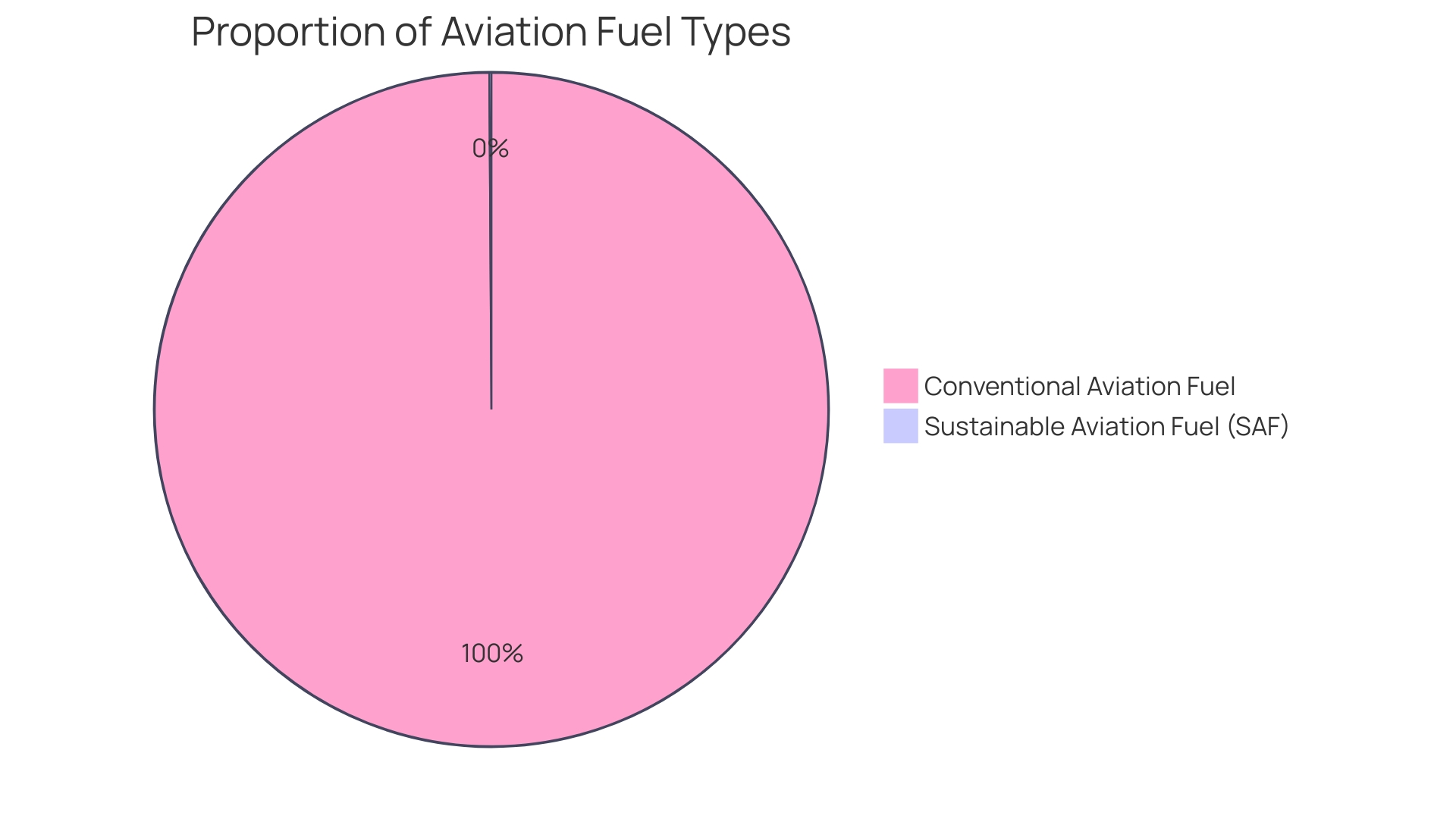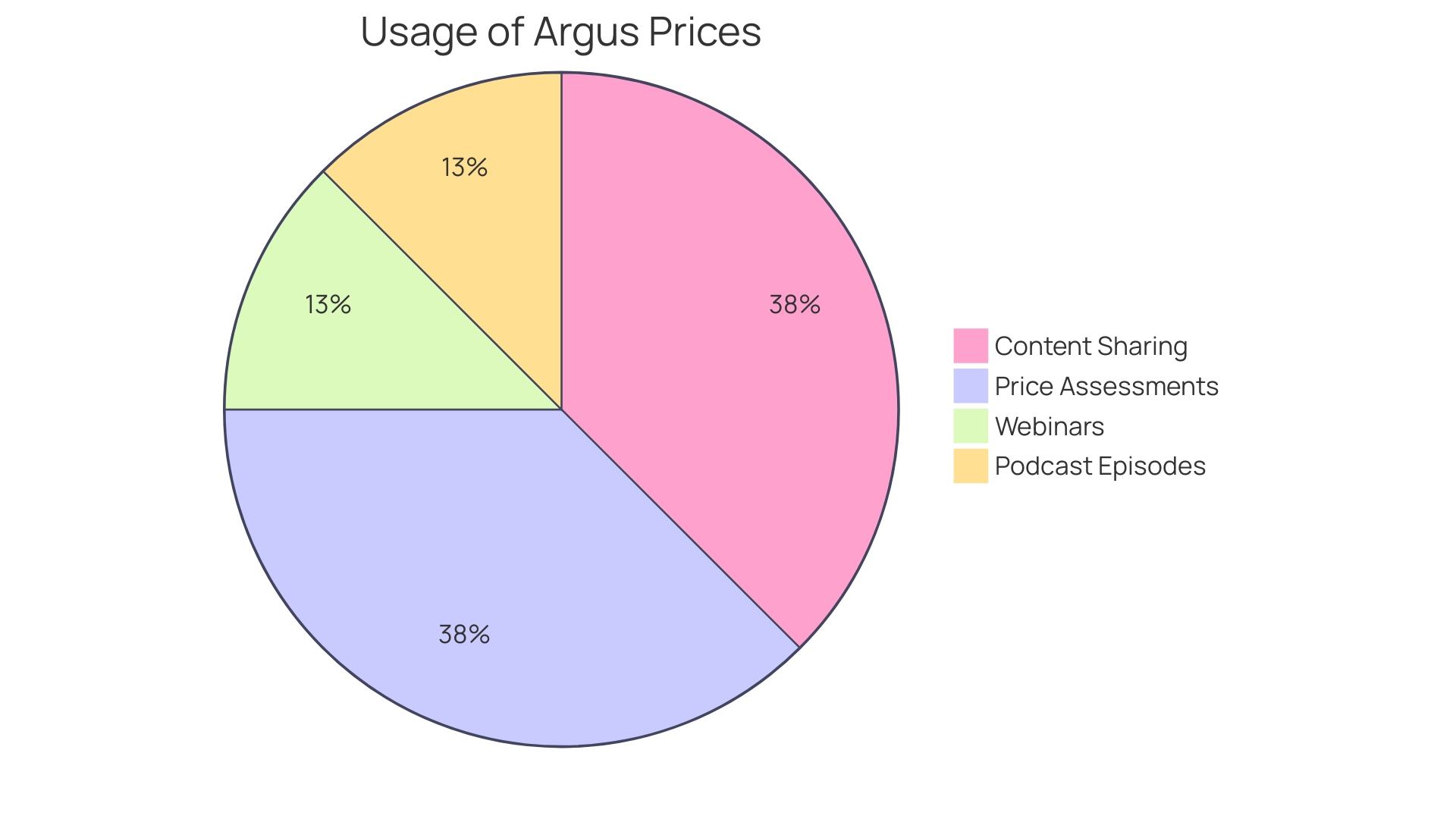Introduction
Jet fuel pricing in 2023 is a complex and multifaceted issue, influenced by a range of global factors that extend beyond traditional supply and demand dynamics. The aviation industry is undergoing a transformative period as it integrates sustainable aviation fuel (SAF), which has the potential to redefine fuel standards that have remained largely unchanged since the 1950s. With increasing pressure to reduce carbon emissions, the aviation sector faces the challenge of adopting SAF to meet environmental targets.
Despite the challenges, the momentum for SAF is bolstered by significant public and private investments aimed at scaling up production. At the same time, the oil markets in 2023 have been shaped by significant events, such as OPEC+'s production cuts and geopolitical tensions, leading to volatile oil prices. Navigating the current and future aviation fuel landscape requires a sophisticated analytical approach.
By staying informed about these developments, airlines and stakeholders can make informed decisions and effectively manage the fuel procurement process.
Global Average Jet Fuel Prices in 2023
Jet fuel pricing in 2023 is a multifaceted issue, shaped by an array of global factors that go beyond the basic economics of supply and demand. In particular, the aviation industry is facing a transformative period as it grapples with the integration of sustainable aviation fuel (SAF), which is poised to redefine fuel standards that have remained largely unchanged since the 1950s. With the increasing push towards reducing carbon emissions, the aviation sector, responsible for about 7% of total transportation emissions in the U.S., is under pressure to adopt SAF to meet environmental targets.
Despite the inherent challenges, such as the required compatibility with existing jet engines, the momentum for SAF is bolstered by significant public and private investments aimed at scaling up production.
Simultaneously, the oil markets in 2023 have been characterized by significant events such as OPEC+'s prolonged production cuts, which have shaped the jet fuel cost landscape. These cuts, amounting to a reduction of approximately 3.66 million barrels per day, have been a response to global economic pressures and are a critical factor in the supply side of the market. The impact of these production adjustments has been compounded by geopolitical tensions and a fluctuating global economy, which have led to volatile oil prices.
According to the World Bank's 2023 Commodity Market Outlook, oil prices averaged $78 per barrel in December, a decrease from the $94 per barrel observed in September, reflecting the complexity of global oil dynamics.
The intricate relationship between the production of traditional jet fuel and the burgeoning SAF market, alongside the broader context of global economic activities and geopolitical events, demonstrates the sophisticated analytical approach required for industry experts to navigate the current and future aviation fuel landscape. By keeping abreast of these developments, airlines and related stakeholders can make informed decisions that factor in potential headwinds and opportunities within the fuel procurement process.
Regional Variations in Jet Fuel Prices in the U.S
Jet fuel prices in the U.S. are subject to numerous influencing factors that can cause significant disparities across different regions. These factors include, but are not limited to, the cost of crude oil, which accounts for over half of the retail price of jet fuel, as well as refining costs, distribution and marketing expenses, and state-specific taxes, based on information from the U.S. Energy Information Administration (EIA). Understanding these variables is crucial for airlines and industry players, as they directly impact route planning, fare structuring, and broader operational strategies.
The retail price of jet fuel is not only shaped by these elements but also by global events and decisions, such as those made by the Organization of the Petroleum Exporting Countries (OPEC). Despite the U.S. being the largest oil producer and consumer of oil derivatives, it cannot fully insulate itself from international market influences. This interdependence underscores the complexity of fuel pricing and the need for comprehensive market intelligence.
Regional studies, such as the examination of sustainable aviation fuels in the Great Lakes and Rocky Mountain regions, offer insights into how local initiatives can influence fuel costs. These studies highlight the potential for cleaner, more sustainable aviation practices, which could lead to a redefinition of fuel economics in the industry. As the industry evolves with these green initiatives, the cost dynamics of jet fuel are also likely to shift, offering new challenges and opportunities for cost management.
Incorporating data from trusted energy and commodity market analysts like Argus, which provides over 25,000 price assessments and has a history of 50 years in data collection, can further refine the understanding of jet fuel costs. Argus's transparent methodologies and compliance with international principles ensure that the prices they provide are reliable indicators of real commodity value, a vital resource for strategic planning within the aviation sector.
Historical Context: Jet Fuel Prices Pre- and Post-Pandemic
The aviation industry's adaptation to the post-COVID-19 environment has been closely watched, with particular attention to jet fuel prices, which are pivotal for airline operations. Historical analysis reveals that the pandemic ushered in a period of low demand and decreased prices, but as the industry recovers, fuel costs are once again making headlines. In 2021, global oil production averaged 93 million barrels per day, and even marginal disruptions can significantly sway the market, as seen with production cuts leading to a sharp rise in oil prices.
This sensitivity to supply changes is critical for industries like aviation, where fuel expenses can represent a substantial portion of operational costs.
For example, IndiGo, India's largest airline, reported that fuel expenses constituted 37.15% of its total expenditure in the first quarter of the fiscal year 2024, underscoring how fluctuations in oil prices directly impact airline finances. This is exacerbated by political instabilities, such as recent tensions in Israel, which have led to rising oil prices and compounded the financial pressure on import-dependent countries like India.
Innovative solutions are being explored to mitigate this vulnerability. A milestone was achieved with Virgin Atlantic's first trans-Atlantic commercial flight using Sustainable Aviation Fuel (SAF) derived from tallow and waste fats. The UK Transport Department supported this initiative with a significant investment, reflecting a growing commitment to 'jet zero' goals.
However, significant challenges in cost and availability of SAF persist, indicating the need for further advances and scalability.
Moreover, the airline industry's recovery is still confronted with the challenge of harmonizing research from various disciplines, which often use inconsistent terms and lack clear key messages. Review articles and literature surveys are crucial for synthesizing novel insights from the plethora of studies on aviation and the pandemic. As the industry navigates through these complexities, reliable data sources such as Argus, with its comprehensive coverage of 25,000+ price assessments, offer invaluable transparency and market intelligence.
These assessments are recognized as accurate reflections of commodity values and are integral for strategic planning in the volatile arena of aviation fuel costs.

Factors Influencing Jet Fuel Prices
The cost of jet fuel, a critical component in airline operations, is subject to a complex array of influences. Crude oil prices are the primary driver, often reflecting geopolitical developments, as seen with the recent production cuts by Saudi Arabia and Russia, causing a significant uptick in prices. Refining costs add another layer to fuel prices, converting crude oil into usable jet fuel.
Taxes and duties further inflate costs, varying widely by jurisdiction. Exchange rate fluctuations also play a pivotal role, especially for countries dependent on importing oil, with a weaker currency leading to higher procurement costs.
Market demand is another essential factor. With global oil production at around 93 million barrels per day in 2021, and the top ten oil-consuming nations claiming over 73% of this, even minor shifts in production can have outsized effects on pricing. As the real GDP is forecast to grow by 2.9% in 2023, rising demand for oil, particularly from the burgeoning aviation sector, could strain supply and elevate prices.
This is exemplified by the airline industry's sensitivity to oil price changes, with companies like IndiGo attributing over 37% of their expenses to fuel costs in the first quarter of FY24.
Moreover, the US aviation sector, which accounts for approximately 7% of total US transportation emissions and is one of the fastest-growing emissions sources, faces challenges in decarbonization. With commercial aircrafts typically in operation for 20 to 30 years, the sector's transition to sustainable aviation fuels (SAF) may be the most viable path to reducing its carbon footprint.
In summary, the multifaceted nature of jet fuel pricing demands a vigilant approach from airlines and fuel suppliers. By examining these factors and their interconnections, industry stakeholders can better forecast price movements, manage risk, and refine their fuel procurement strategies.
Impact of Fuel Efficiency on Jet Fuel Consumption
As the aviation industry looks to the future, the advancement of sustainable aviation fuel (SAF) is at the forefront of discussions on reducing carbon intensity and fostering environmental sustainability. SAF, which can be made from waste fats like those used in the first trans-Atlantic fossil fuel-free flight by a Virgin Atlantic Boeing 787, offers a promising solution to the aviation sector's dependence on traditional jet fuels. This innovative fuel has the potential to slash the carbon footprint of flying by over 80 percent, a stark contrast to Saf's current global market share of less than 0.1 percent, hindered by supply, demand, and pricing challenges.
Renowned for its energy density, SAF is not only a renewable resource but also boasts compatibility with existing jet engines, requiring no major modifications to the fleet. The aviation industry, historically reliant on a type of fuel that has seen minimal change since the 1950s, is now on the cusp of a significant transformation. As Robert McCormick from the National Renewable Energy Laboratory notes, introducing a new jet fuel concept is an unprecedented move for the sector.
The recent opening of the LanzaJet Freedom Pines Fuels plant in Georgia, acclaimed as the world's inaugural ethanol-to-SAF production facility, marks a historic milestone in aviation's journey towards decarbonization. This pioneering technology utilizes sustainable feedstock and could scale up to meet the industry's demand for decarbonization.
Despite these advancements, the industry must also tackle non-CO2 impacts of aviation, such as the formation of contrail cirrus clouds, which can have a warming effect comparable to 61 percent of the CO2 emissions from air travel. With the International Air Transport Association's commitment to achieving net-zero emissions by 2050 and various stakeholders pledging to reduce aviation emissions, the integration of SAF into the fuel strategy appears to be a critical step in the industry's evolution towards a more sustainable future.
In essence, the adoption of SAF, supported by strategic public and private investments, could revolutionize the industry, offering both environmental benefits and the potential for substantial cost savings over time. As such, the impact of fuel efficiency on jet fuel consumption extends beyond technological advancements to include the broader adoption of SAF, positioning the aviation industry on a path towards a greener and more cost-effective operational model.

Consumer Categories and Their Fuel Consumption
Fuel consumption within the aviation sector is influenced by a diverse array of factors, including aircraft type, load factors, and operational profiles. These elements vary significantly across different consumer categories such as commercial airlines, cargo carriers, and private jet operators. For example, the U.S. business jet market, dominated by Cessna with a 35% market share, Gulfstream with 17%, and Bombardier with 12%, reflects a competitive landscape where fuel efficiency, luxury, and range are pivotal.
Each manufacturer's fleet has unique fuel requirements that influence overall demand and costs.
Industry stakeholders, such as airlines and airports, utilize tools like Cirium Fleets Analyzer to navigate these complexities. They assess aircraft-to-flight profitability by examining interior configurations and engine fuel burn, thereby optimizing pricing models. Additionally, insurance firms employ this data to gauge risks and premiums based on the operational history of different aircraft types.
The push towards sustainable aviation fuels is another critical factor shaping fuel consumption patterns. Although sustainable fuels currently constitute a mere 0.53% of airline fuel consumption, initiatives in regions like the Great Lakes and the Rocky Mountains are exploring their viability. These efforts, combined with advancements in technologies such as hybrid-electric systems and fuel cells, underscore the industry's commitment to reducing its carbon footprint.
Incorporating comprehensive and transparent LCI datasets, which capture the full spectrum of input and output flows associated with aviation technologies, is instrumental in this transition. They enable a holistic assessment of environmental sustainability, guiding decision-makers towards more sustainable aviation pathways.
The demand for air travel, expected to grow at an average of 3.6% annually to 2043, with Asia-Pacific leading the surge, further underscores the need for robust, scalable solutions in aviation fuel management. Consequently, understanding the distinct fuel consumption patterns of various consumer categories is not just about meeting immediate operational needs, but also about shaping a sustainable future for the aviation industry.
Comparison of Jet Fuel Prices Across Different Markets
Jet fuel prices exhibit significant global variations, influenced by the complex interplay of regional supply and demand, differing taxation regimes, and distinct fuel quality benchmarks. A meticulous comparative analysis of jet fuel costs across diverse markets yields critical insights into the regional competitive landscapes and cost structures, empowering airlines and sector stakeholders to pinpoint potential cost efficiencies, strategize market entries, and comprehend the intricate pricing dynamics peculiar to specific locales.
While diesel and gasoline both originate from crude oil and comprise hydrocarbons, their characteristics diverge notably. Gasoline, a lighter fuel, is composed of hydrocarbons from four carbons to about twelve, with octane sitting in the median range. Diesel, however, is denser, packs more energy per gallon, and has a higher hydrocarbon range.
This distinction is consequential when considering fuel options for different applications and efficiencies.
Recent trends have seen diesel commanding a premium over gasoline, with 2022 witnessing a record disparity, influenced by a variety of factors. For instance, the strategic production cuts by major oil nations such as Saudi Arabia, coupled with heightened global demand, have propelled oil prices upwards. These price escalations directly impact jet fuel costs, given that crude oil prices constitute a substantial portion of the overall price of refined fuels.
In the arena of sustainable aviation, initiatives like Jetex's commitment to carbon emission reduction and alignment with IATA's 2050 net-zero goals underscore the industry's shift towards greener practices. This shift has profound implications on both operational costs and fuel pricing structures.
Moreover, the U.S. aviation sector, accountable for around 7% of the nation's transport emissions and growing rapidly, is grappling with the challenge of decarbonization. Given the operational lifespan of commercial aircraft and the limitations of current technology, sustainable aviation fuels (SAF) emerge as the most feasible option for mid-century emission reduction goals.
The business jet market, a microcosm of the aviation industry's competitive landscape, sees Cessna, Gulfstream, and Bombardier as dominant players, each offering unique value propositions ranging from efficiency to luxury. Understanding the market share dynamics of these manufacturers, as visualized in recent market share data, can provide additional context for fuel procurement strategies and cost analysis.

Conclusion
Jet fuel pricing in 2023 is influenced by global factors beyond supply and demand. The integration of sustainable aviation fuel (SAF) is transforming the industry, with significant investments driving momentum. The oil markets, shaped by events like OPEC+'s production cuts and geopolitical tensions, result in volatile prices.
Understanding the variables affecting jet fuel prices in the U.S., such as crude oil costs, refining expenses, taxes, and more, is crucial for effective planning and operational strategies. Historical analysis highlights the sensitivity of fuel costs to supply changes, emphasizing the need for innovative solutions and comprehensive market intelligence.
The advancement of SAF offers a promising solution to reduce carbon intensity. Its compatibility with existing jet engines and potential to significantly slash the carbon footprint of flying make it transformative. The opening of production facilities like the LanzaJet Freedom Pines Fuels plant marks a historic milestone in decarbonization efforts.
Fuel consumption patterns vary across different consumer categories, such as commercial airlines, cargo carriers, and private jet operators. Understanding these patterns and utilizing comprehensive data sources is crucial for optimizing pricing models and shaping a sustainable future for the industry.
Jet fuel prices exhibit significant global variations due to regional dynamics, taxation regimes, and fuel quality benchmarks. Comparative analysis provides valuable insights for identifying cost efficiencies and understanding pricing dynamics. The shift towards sustainable aviation practices and the need for decarbonization present challenges and opportunities for cost management.
In conclusion, a deep understanding of the renewable fuels industry is essential for navigating the complex nature of jet fuel pricing. Staying informed, incorporating reliable data sources, and adopting a sophisticated analytical approach enables informed decision-making and effective fuel procurement management.




